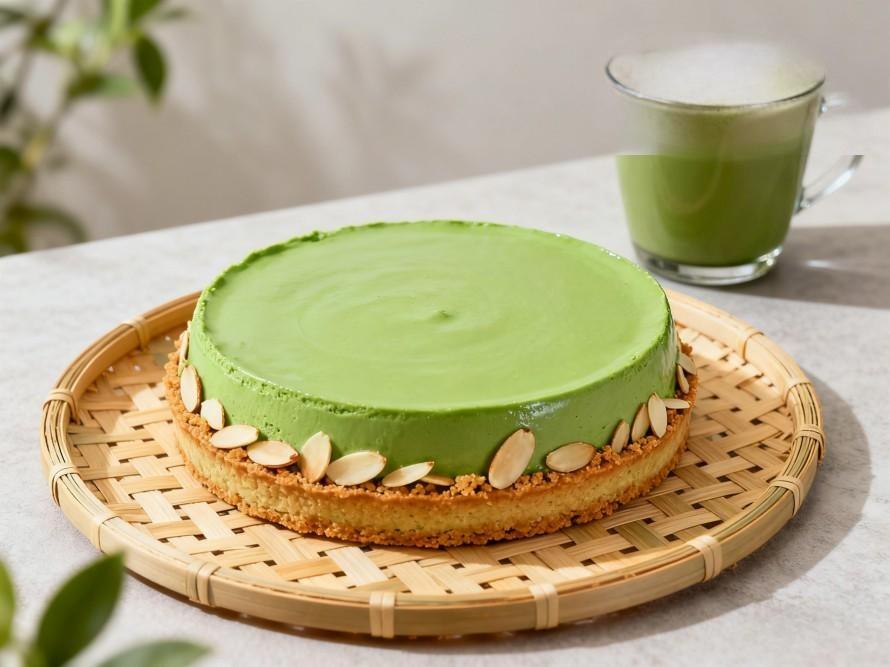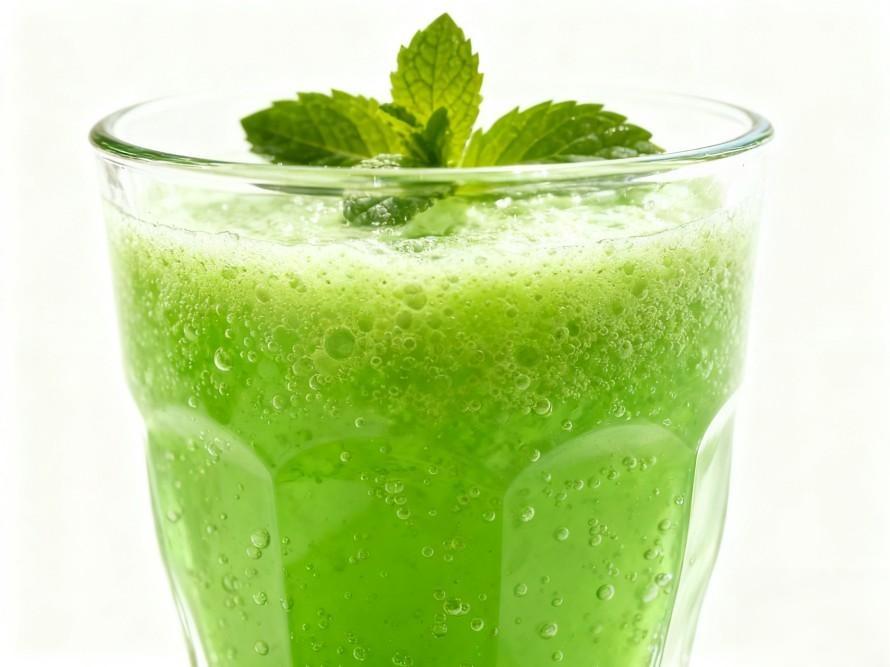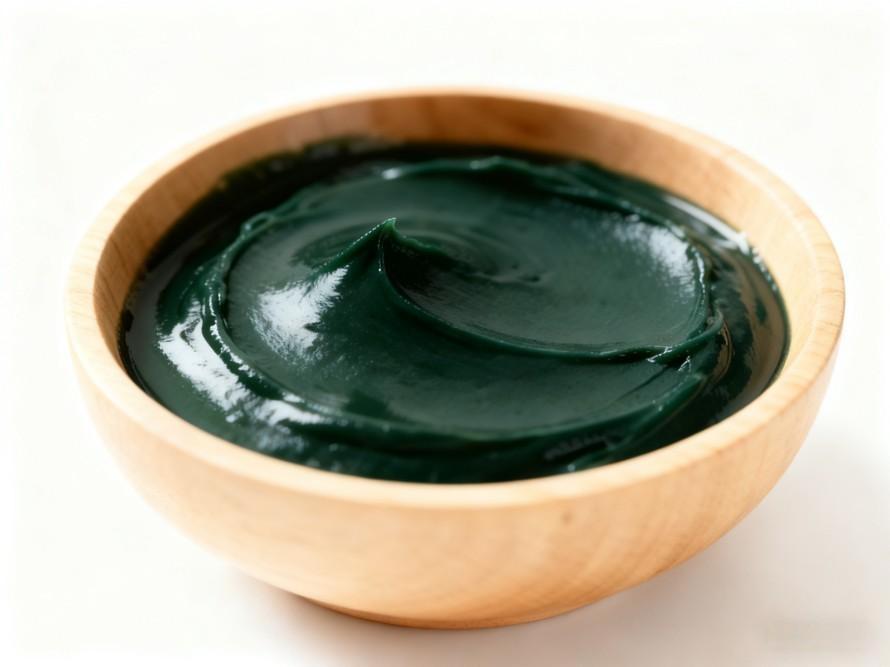Green Spring Technology's Copper Sodium Chlorophyll Offers Exceptional Light and Heat Stability
In the application of natural pigments, have you ever encountered these frustrations:
· A meticulously crafted emerald-green beverage gradually loses its vibrant hue after weeks on display in transparent bottles?
· Green gummies rich in natural ingredients develop uneven coloring or noticeably fade after high-temperature cooking processes?
· Receiving consumer complaints about shelf-displayed products due to color changes, ultimately damaging brand reputation?
These persistent headaches often trace back to a single culprit: insufficient pigment stability.
Light exposure and heat processing are the two primary factors causing natural pigment degradation and diminished product appearance. When a product's visual appeal fades over time, the loss extends beyond sales—it erodes consumer trust in your brand.
Now is the time to bid farewell to these frustrations!
Green Spring Technology deeply understands the challenges you face in product quality control. We proudly introduce our highly stable copper-sodium chlorophyllin—a product engineered to conquer light and heat challenges, ensuring your products maintain vibrant, fresh coloration under any conditions.
Choosing Green Spring Technology means choosing:
· Long-lasting, stable product appearance
· Significantly reduced shelf-life complaints
· A trustworthy brand image

1 How GreenSpring Achieves Superior Light and Heat Stability
The exceptional stability of GreenSpring's copper sodium chlorophyllin stems from our continuous innovation in raw materials, processes, and technology. Here's the technical assurance that will help you say goodbye to fading concerns:
1.1 Superior Thermal Stability: Withstands High-Temperature Processing
Technical Breakthrough:
Through unique molecular structure optimization and encapsulation technology, our copper sodium chlorophyllin withstands continuous heat treatment up to 130°C, delivering outstanding performance in standard baking, confectionery cooking, and UHT sterilization processes.
Key Advantages:
· Retains 98.2% color value after 30 minutes at 120°C
· Tolerates a wide pH range of 3.0–8.0, adapting to diverse food processing environments
· Maintains stable color performance after multiple thermal cycles
Value delivered:
· Ensures product color remains fully consistent with expectations after high-temperature processing
· Achieves “baked-to-finish color,” significantly reducing batch rejections due to color discrepancies
· Expands possibilities for developing new products requiring high-temperature processing
1.2 Exceptional Light Stability: Preserving Shelf-Life Appearance
Technical Assurance:
Our advanced microencapsulation technology forms a protective layer around pigment molecules, effectively shielding them from degradation by UV and visible light.
Performance:
· Extends color half-life to over 3 times longer than standard products in accelerated light exposure tests
· Improves color retention by 50% during shelf life under transparent packaging
· Effectively resists intense store lighting to maintain product freshness
Value Delivered:
· Significantly extends optimal visual display period
· Reduces customer complaints and return losses due to fading
· Enhances consumer confidence in product freshness
1.3 Synergistic Stability Advantages
Beyond exceptional light and heat stability, our product offers:
· Superior acid-base stability: Maintains integrity across acidic to neutral environments
· Strong oxidation stability: Resists color changes caused by oxidation reactions
· Stable dispersibility: Maintains uniform distribution across various systems, preventing sedimentation
1.4 Authoritative Validation Data
Third-party testing data indicates:
· After 90-day accelerated testing, total color difference (ΔE) remains below 2.0
· After 6 months storage at 40°C/75%RH, color value loss rate does not exceed 5%
· Stability index improved by over 35% compared to similar market products
2 Application Scenarios for Copper-Sodium Chlorophyllin
Green Spring Technology's high-stability copper-sodium chlorophyllin demonstrates its exceptional performance through solving practical challenges for clients across industries. Below are our tailored solutions for different sectors:
2.1 Beverage Industry: Eliminating Light-Sensitivity Issues
Application Scenarios:
· Transparent-bottled functional beverages
· Fruit juices and carbonated drinks
· Sports drinks and electrolyte beverages
Solution:
A renowned sports drink brand achieved the following after adopting our product:
· Color retention time extended from 4 weeks to 12 weeks under accelerated testing (40°C, intense light exposure)
· Reduced shelf complaints by 67%
· Successfully extended product shelf life from 9 months to 18 months
Customer Testimonial:
“Since switching to Green Spring Technology's copper sodium chlorophyllin, we no longer worry about product discoloration under supermarket lighting, and customer complaints have significantly decreased.”
2.2 Candy and Preserved Fruit Industry: High-Temperature Processing No Longer a Challenge
Application Scenarios:
· Soft and gel candies
· Hard candies and tablet candies
· Chocolate products and candy coatings
Solutions:
A major confectionery company achieved the following using our products:
· Color uniformity improved to 98.5% during 120°C cooking processes
· Production line scrap rate reduced by 45%
· Successfully developed a natural green candy series previously unattainable due to excessive processing temperatures

2.3 Bakery and Snack Industry: Preserving “Fresh-Out-of-the-Oven” Quality
Application Scenarios:
· Biscuits and crisp snacks
· Cakes and decorative toppings
· Breakfast cereals and nutrition bars
Solutions:
A premium bakery brand achieved the following after adopting our product:
· Maintained color difference (ΔE) below 1.5 throughout 180-day shelf life
· Increased customer repurchase rate by 32%
· Successfully entered premium supermarket channels with stringent product appearance requirements
2.4 Dairy Industry: Consistent Performance Exceeding Expectations
Application Scenarios:
· Flavored dairy products
· Ice cream and frozen desserts
· Yogurt and dairy-based desserts
Solutions:
Feedback from a dairy enterprise:
· Pigment retention rate exceeds 97% during pasteurization and UHT processes
· Color stability maintained throughout cold chain distribution
· Achieved “Clean Label” certification, boosting product premium by 25%
2.5 Technical Support and Service Commitment
We provide comprehensive technical support:
Pre-sales services:
· Complimentary sample testing and evaluation
· Process adaptability analysis
· Cost-benefit analysis
During-sales support:
· Customized formulation optimization
· Production process parameter recommendations
· On-site technical guidance
Post-sales assurance:
· Continuous quality monitoring
· Regular performance evaluations
· Technical upgrade services

Case Study:
Through collaboration with us, an international food company not only resolved its long-standing color fading issue but also achieved:
✓ 42% reduction in annual wastage rate
✓ 28% increase in customer satisfaction
✓ 15% growth in market share
“Green Spring Technology's product stability exceeded our expectations. Their technical support team is professional and responsive, making them a trusted partner.”
Regardless of your industry niche, Green Spring Technology delivers expert solutions. Let's collaborate to create value at every stage of your product lifecycle with consistent color performance.
3 Partner with Green Spring Technology
Green Spring Technology has established comprehensive quality assurance from raw materials to finished products, ensuring every batch delivers exceptional and consistent stability.
3.1 Comprehensive Quality Assurance System
3.1.1 Authoritative Certifications, Globally Recognized
Our production system and quality management have earned multiple international authoritative certifications, including:
· BRC Global Standard for Food Safety (Grade AA)
· IFS International Food Standard (High Level)
· ISO9001 Quality Management System Certification
· ISO 22000 Food Safety Management System Certification
· FDA Food Facility Registration
· Halal Certification
· Kosher Certification
3.1.2 Stringent Quality Control
We maintain a comprehensive quality control system:
· Raw Material Control: Selecting premium mulberry leaves with full-process oversight from cultivation to harvest
· Production Process: Utilizing fully automated production lines to ensure precise and stable process parameters
· Finished Product Inspection: Each batch undergoes testing against 28 quality indicators
· Stability Testing: Regular accelerated tests continuously validate product performance
3.1.3 Continuous Technological Innovation
· Annual R&D investment: 8% of sales revenue
· Joint laboratories established with multiple renowned universities
· 12 related patented technologies
· Ongoing optimization of product stability metrics
3.2 Professional Technical Support Services
By choosing us, you gain:
· Market-proven, highly stable products
· Expert technical team support
· Comprehensive after-sales service system
· Ongoing product upgrade services
Special Service Commitments:
· 24-hour response to technical inquiries
· Sample dispatch within 5 business days
· Complete technical documentation package
· Customized solution support
Contact Us:
Green Spring Technology Co., Ltd.
Tel: +86 29 88313578
Mobile/WhatsApp: +86 13649243917
Email: helen@greenspringbio.com
Website: https://www.greenspringnatural.com/
Let's collaborate to build lasting market competitiveness for your products with stable color performance!
References
[1] Wang Min, Liu Linwei. Research progress of chlorophyll and derivatives and analysis of green protection technology [J]. Journal of Zhengzhou Institute of Light Industry, 2001(1): 63-67.
[2] Liu Taoli. Stepwise preparation of pectin, zinc sodium chlorophyllin and leaf protein from silkworm excrement [D]. Nanning: Guangxi University, 2014.
[3] Liu Dan. Preparation of sodium copper chlorophyllin from microalgae and extraction and separation of other bioactive substances [D]. Nanchang: Nanchang University, 2014.
[4]Rodriguez-Amaya,Delia B,Natural food pigments and colorants [J].Current Opinion in Food Science,2016, 7:20-26.
[5] GB 26406-2011, Food safety national standard – Food additive – Sodium copper chlorophyllin [S].
[6]Mahmoud Y I,Shehata AMM,Fares N H,et al.Spir- ulina inhibits hepatocellular carcinoma through activating p53 and apoptosis and suppressing oxidative stress and angiogenesis [J].Life Sci,2021,265:118827.
-
Prev
Curcumin Ingredient: The Closest Yellow to Nature, Backed by Science
-
Next
Clean Label, Natural Colorant: Copper Sodium Chlorophyllin


 English
English French
French Spanish
Spanish Russian
Russian Korean
Korean Japanese
Japanese




